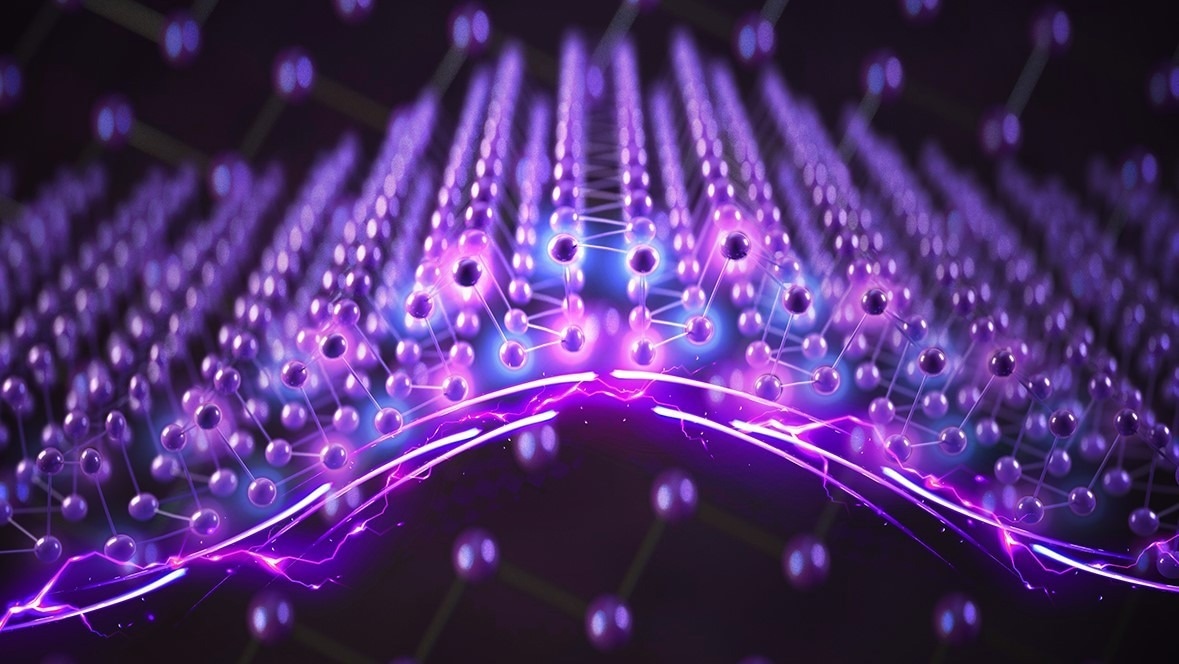Ferroelectric materials have been studied extensively since their discovery more than a century ago because of their numerous uses in everything from data storage to sustainable energy sources. Ferroelectric materials can produce an electric field and have several advantages, including the ability to store data without a power source and having a high writing speed and storage capacity.

The figure schematically illustrates that a monolayer of single-element bismuth contains two different types of ions that switches polarity with each other as the domain wall moves. Image Credit: National University of Singapore
Two-dimensional (2D) ferroelectric materials are a new form of ferroelectric material. However, due to the scarcity of accessible materials, study and advancement in this field are limited.
Physicists from the National University of Singapore (NUS) have recently found a novel single-element material known as 2D black phosphorus-like bismuth (BP-Bi) that exhibits ferroelectric properties, adding to the existing library of 2D ferroelectric materials.
This new material challenges the traditional understanding of ferroelectric materials, which are typically composed of compounds containing opposing charges that enable the creation of an electric field. This discovery provides an answer to the basic issue of whether single-element substances have ferroelectric properties.
A team led by Professor Andrew Wee from the Department of Physics within the NUS Faculty of Science, along with collaborators Professor Chen Lan from the Institute of Physics under the Chinese Academy of Sciences and Professor Lu Yunhao from the School of Physics under Zhejiang University, made this groundbreaking discovery. On April 5th, 2023, the results of this new ferroelectric material were published in Nature.
The single-element material, BP-Bi, was visualized in depth at the atomic scale by researchers using cutting-edge methods. They discovered a new type of ferroelectricity within the BP-Bi structure using experimental methods that are controllable by an outside electrical source.
The experts discussed how this type of ferroelectricity would affect the development of sophisticated data storage systems and quantum electronic devices in the future. Studying the fundamental physical properties of elements is now possible from a new angle with this new single-element ferroelectric material.
In addition to overturning the common-sense idea that ionic polarization only exists in compounds, we believe that single-element ferroelectricity in BP-Bi would introduce a new perspective to the study and design of novel ferroelectric materials, and inspire new physics of elemental materials in the future.
Andrew Wee, Professor, Department of Physics, National University of Singapore
Journal Reference
Gou, J., et al. (2023) Two-dimensional ferroelectricity in a single-element bismuth monolayer. Nature. doi:10.1038/s41586-023-05848-5.